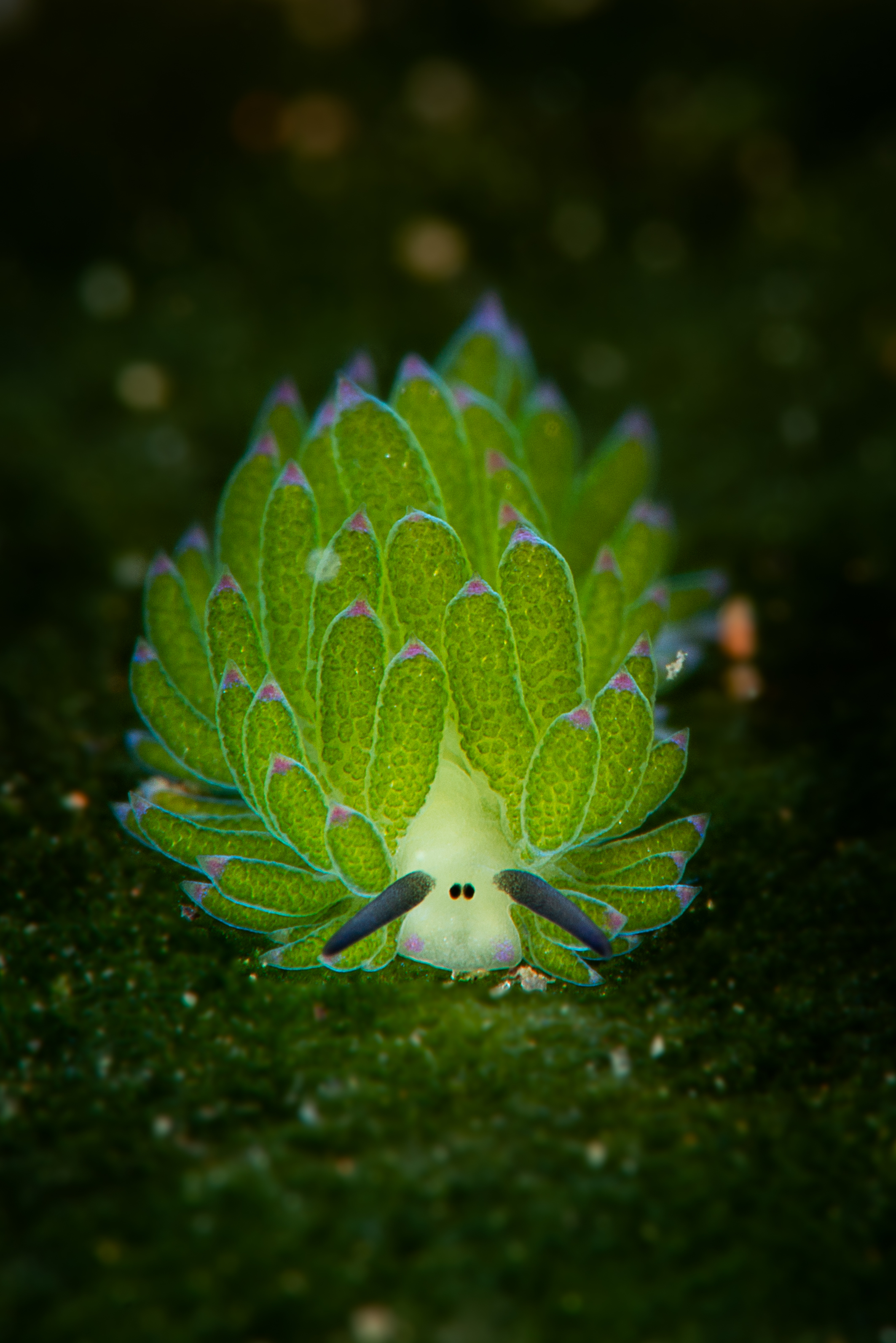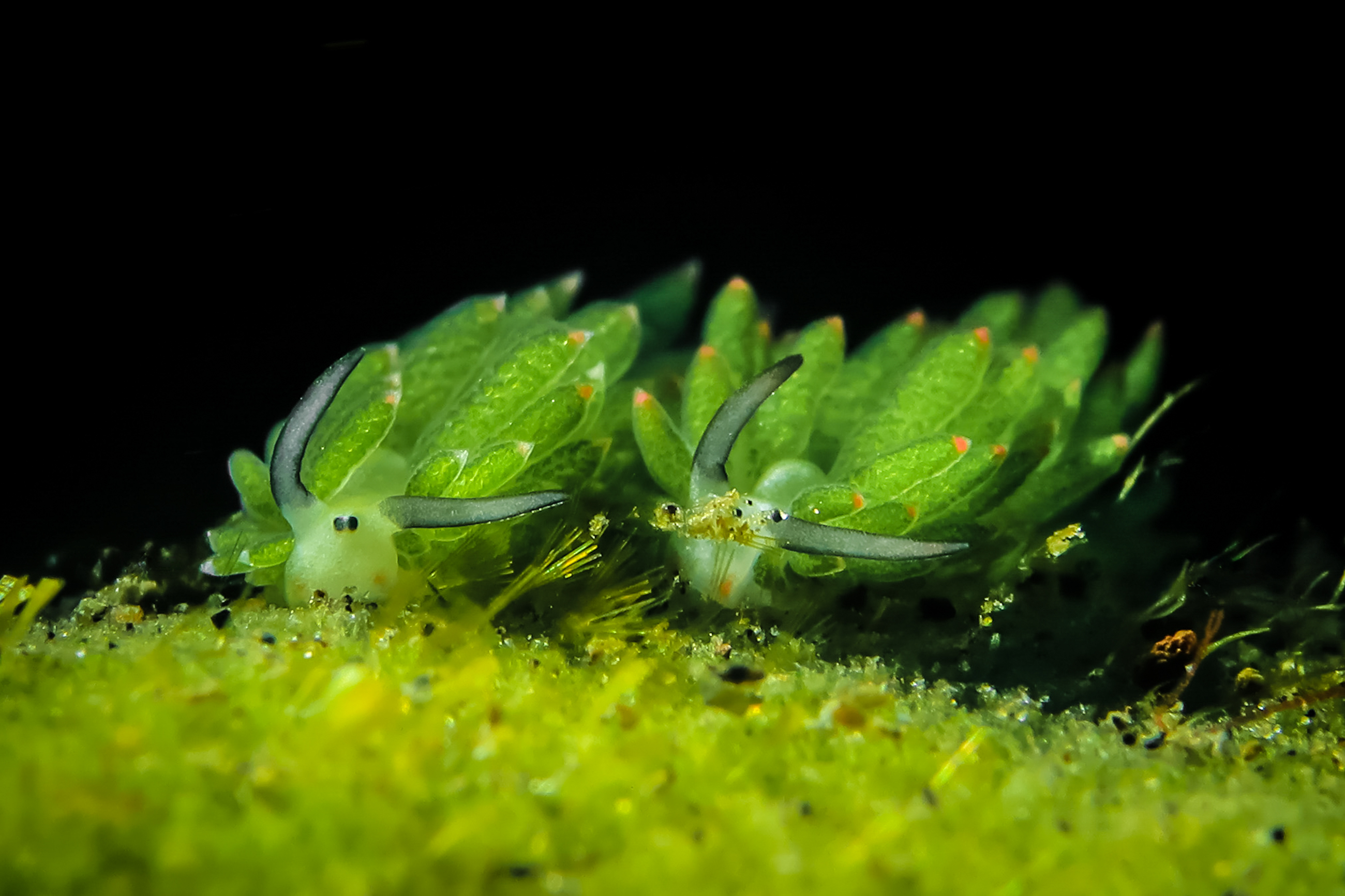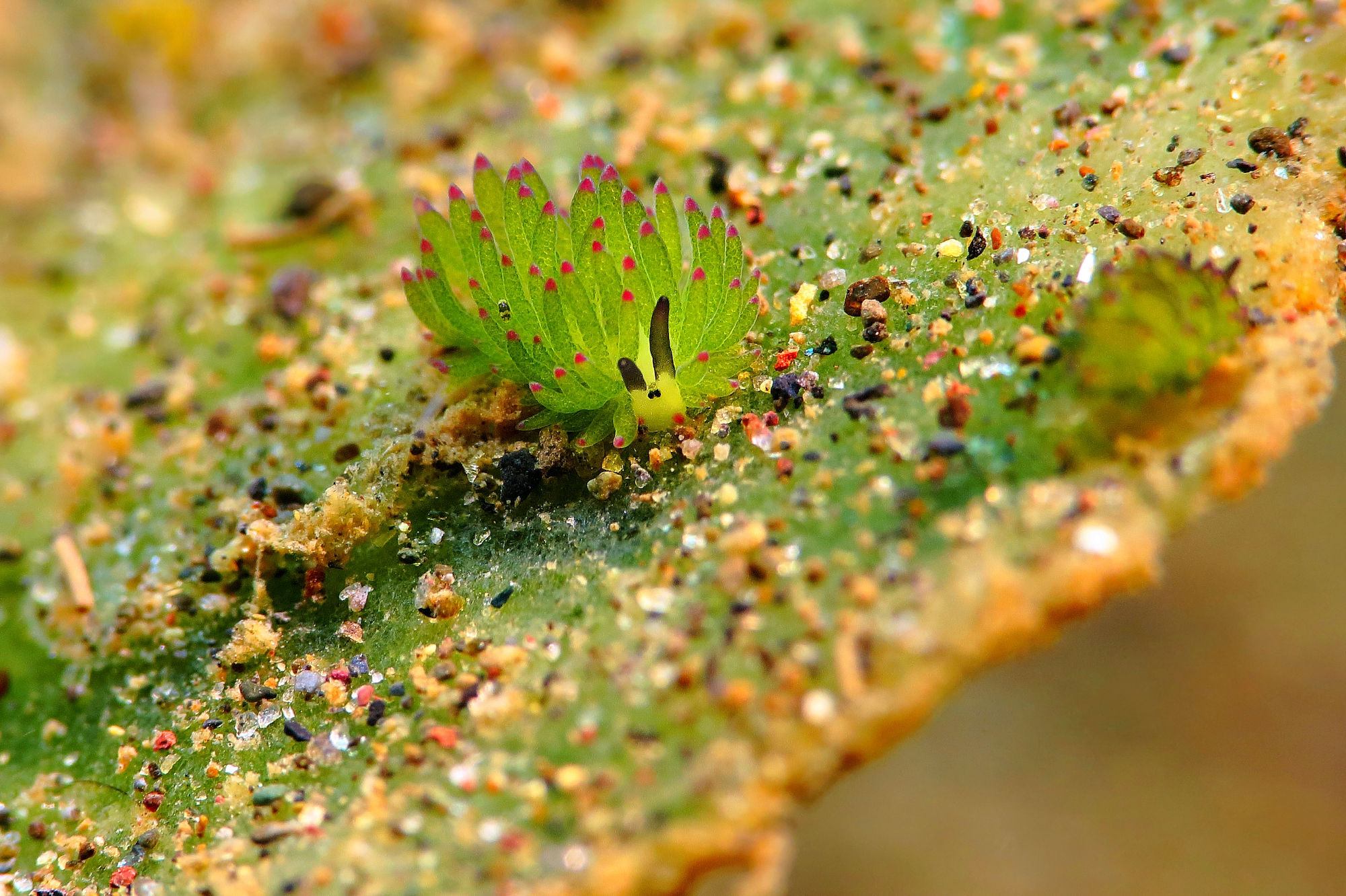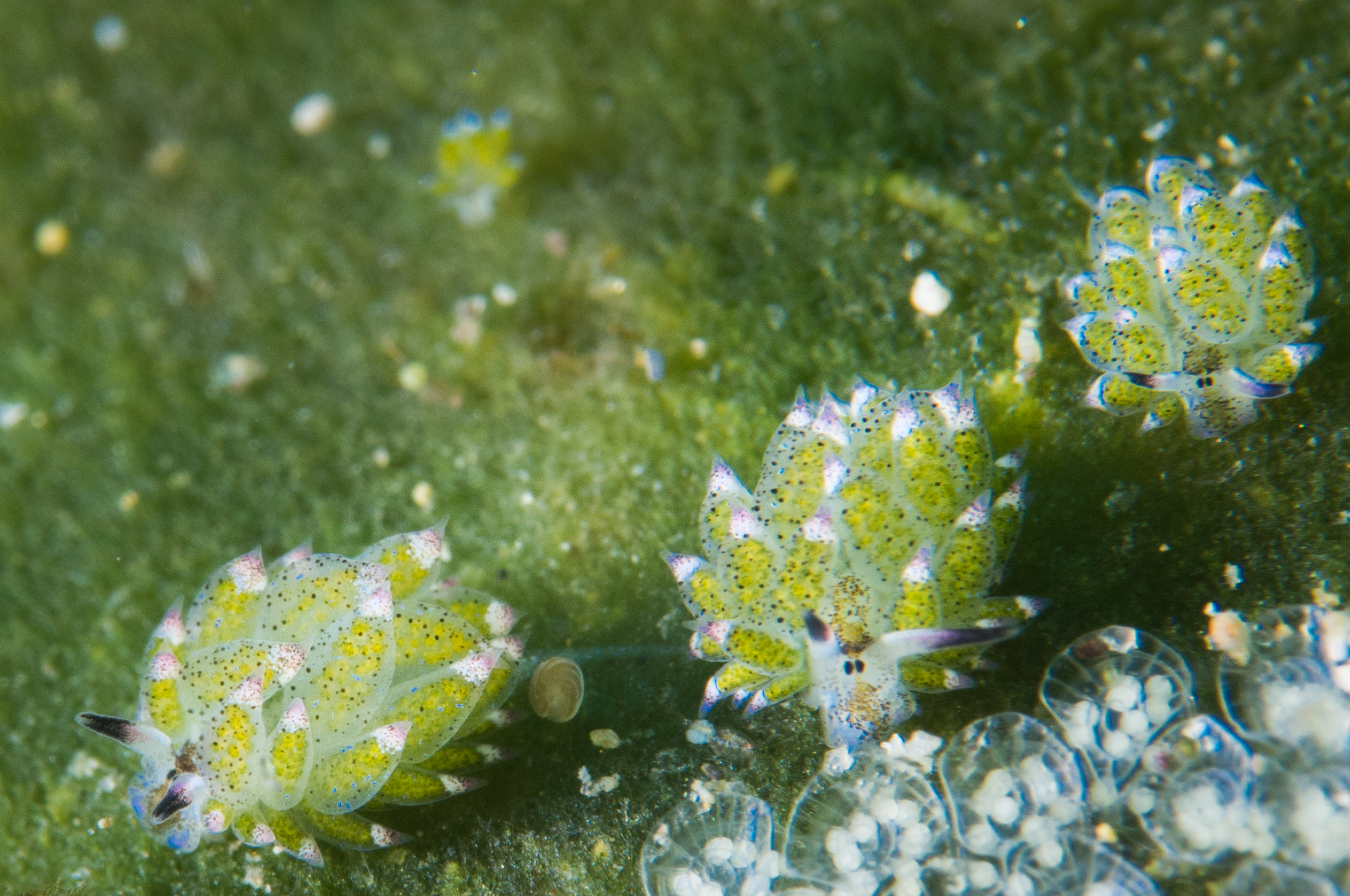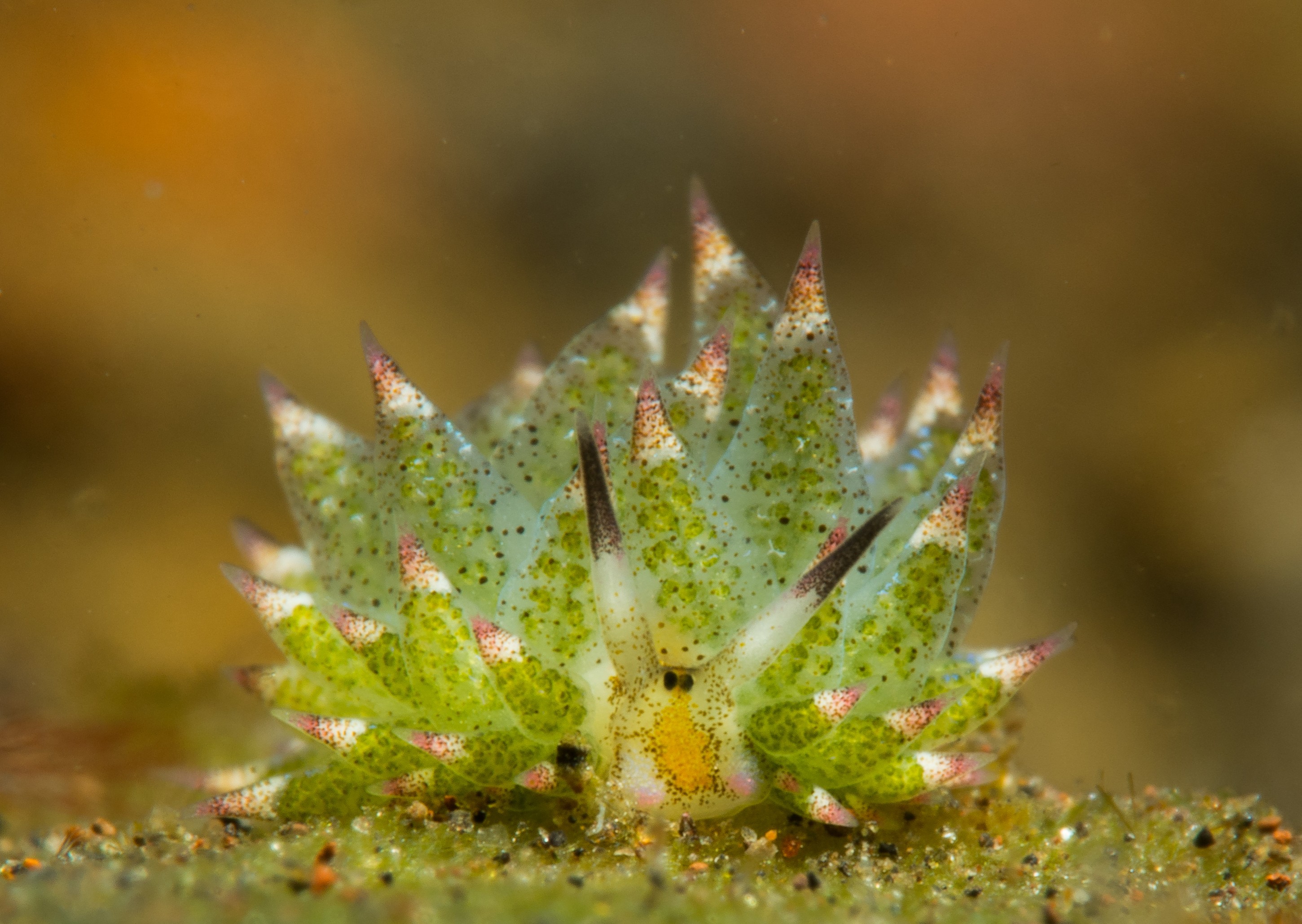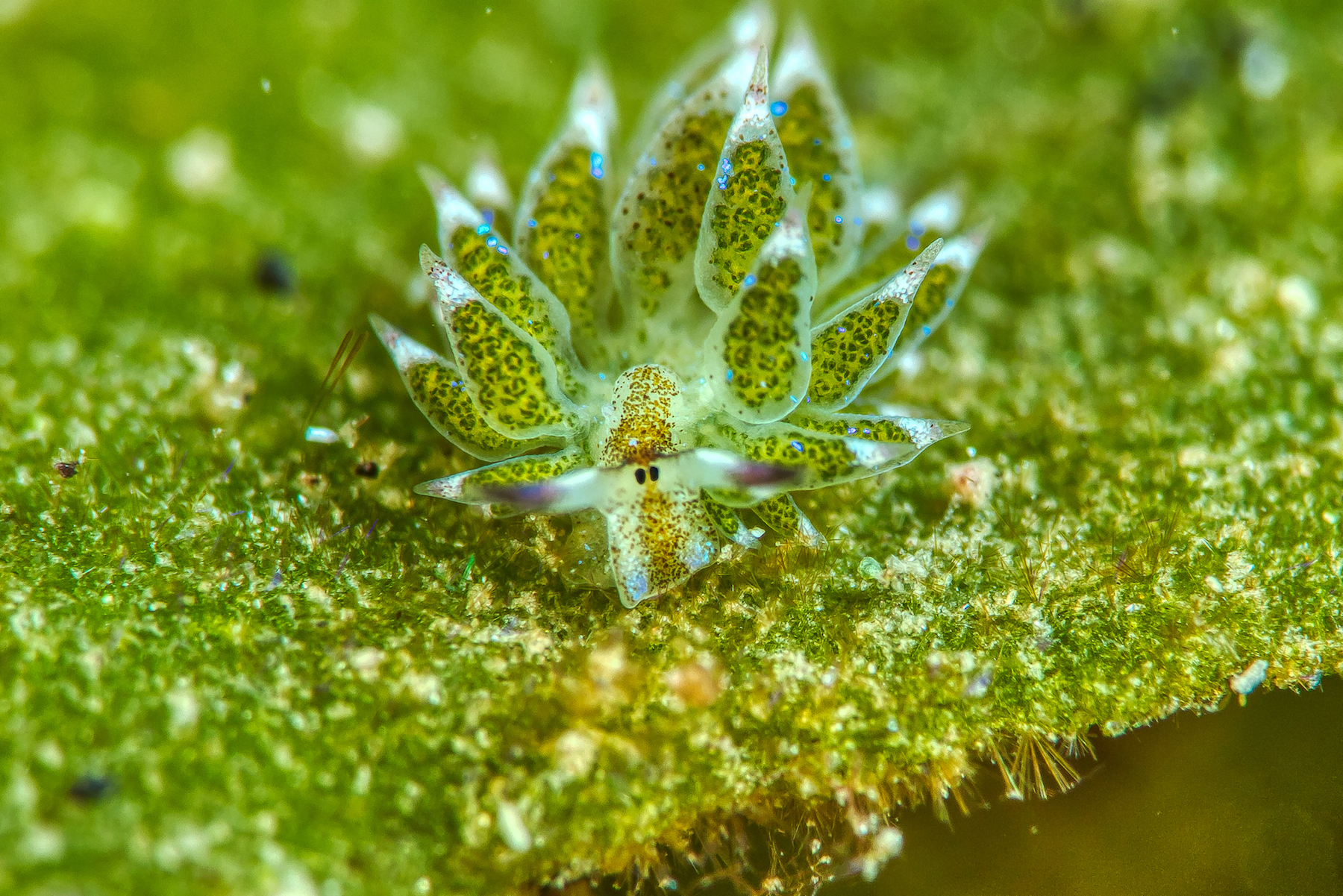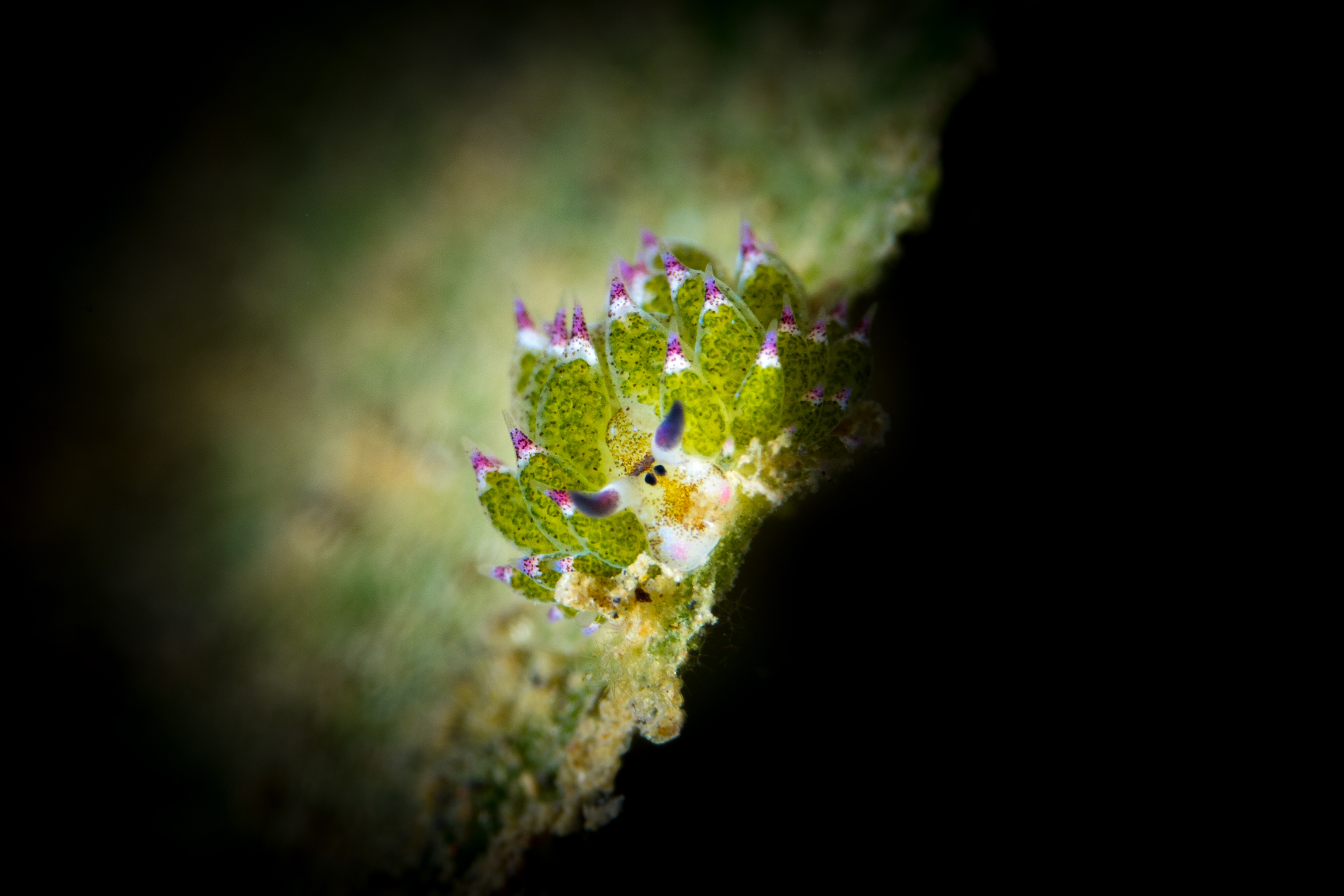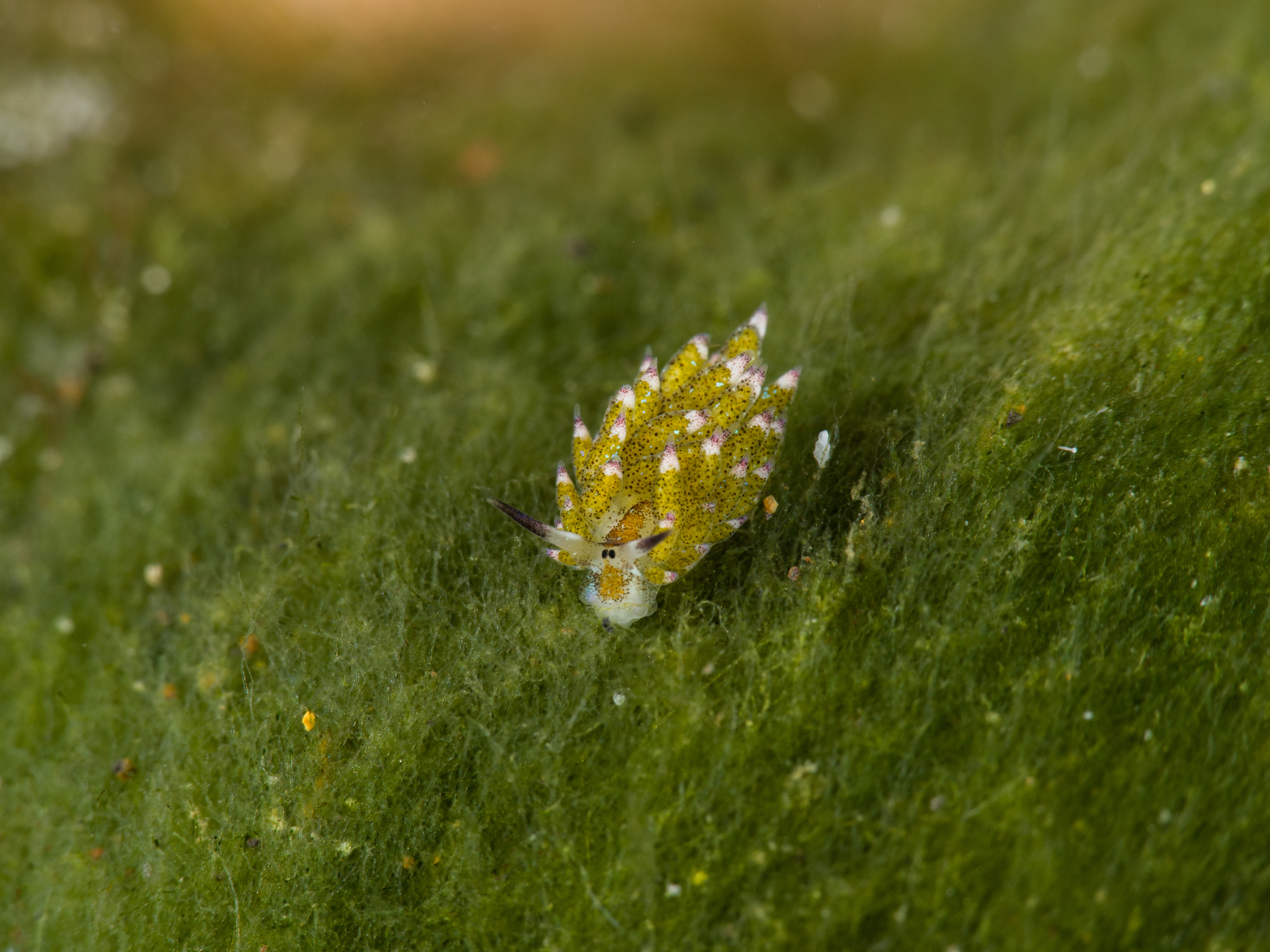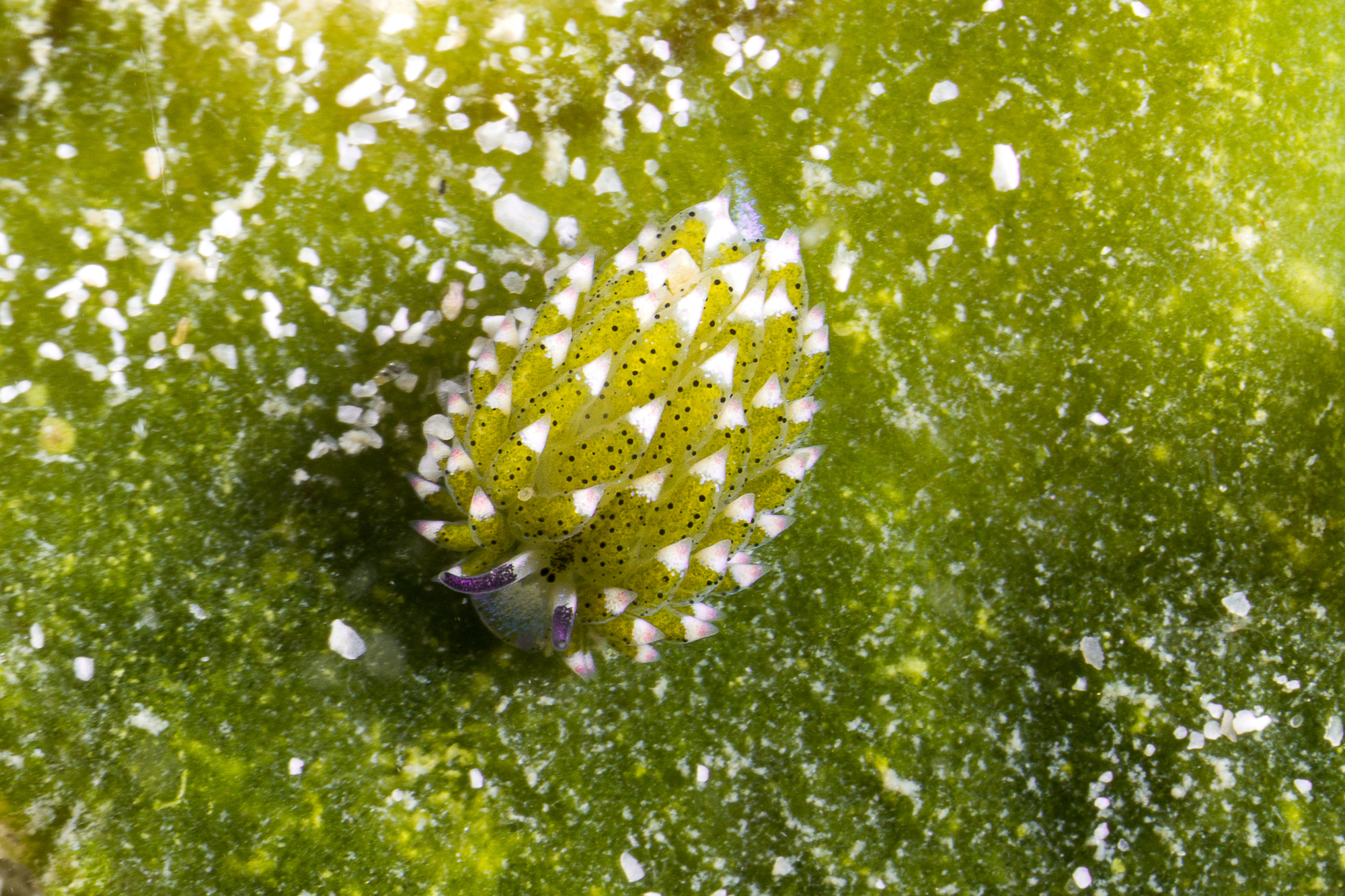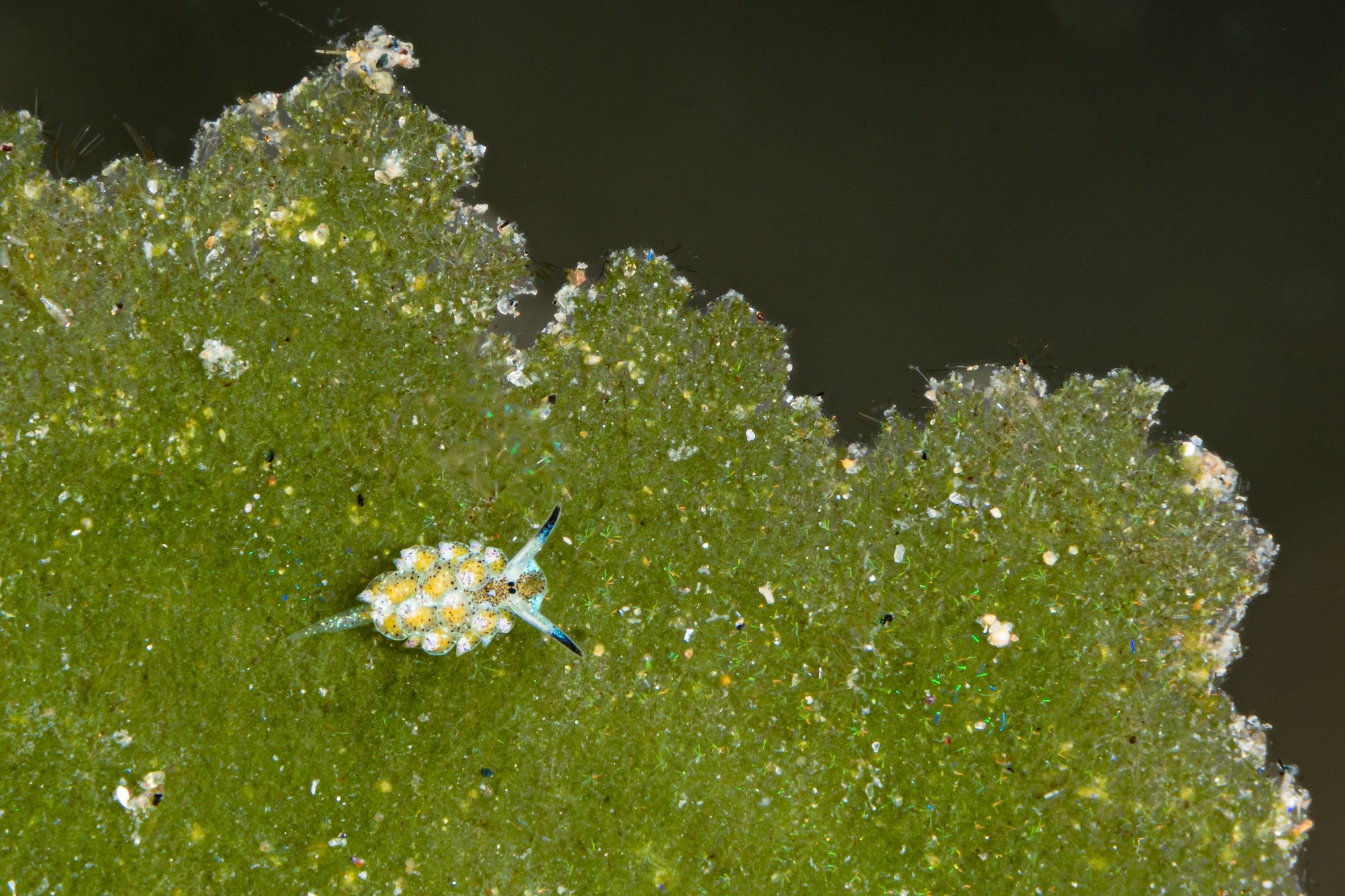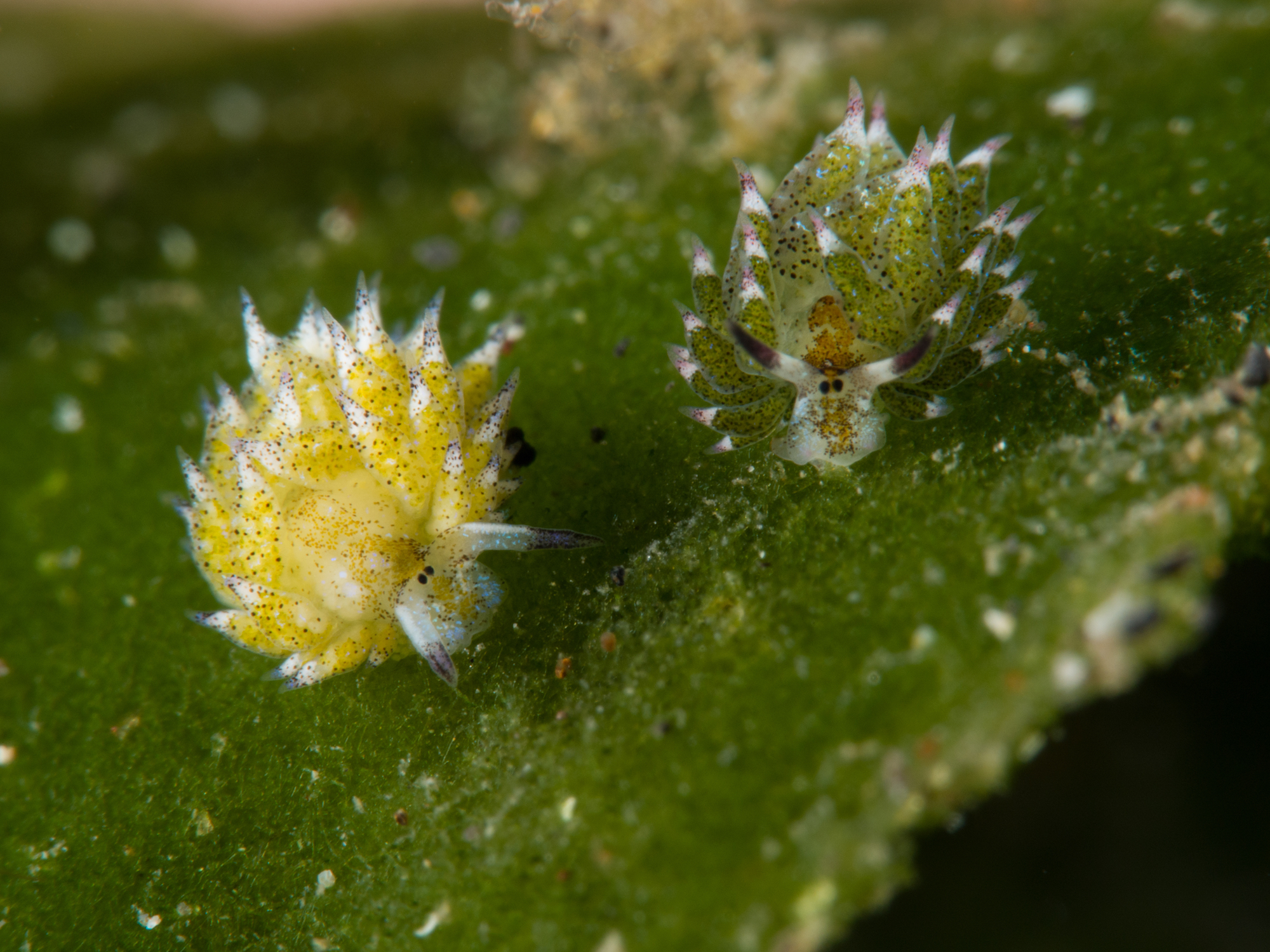

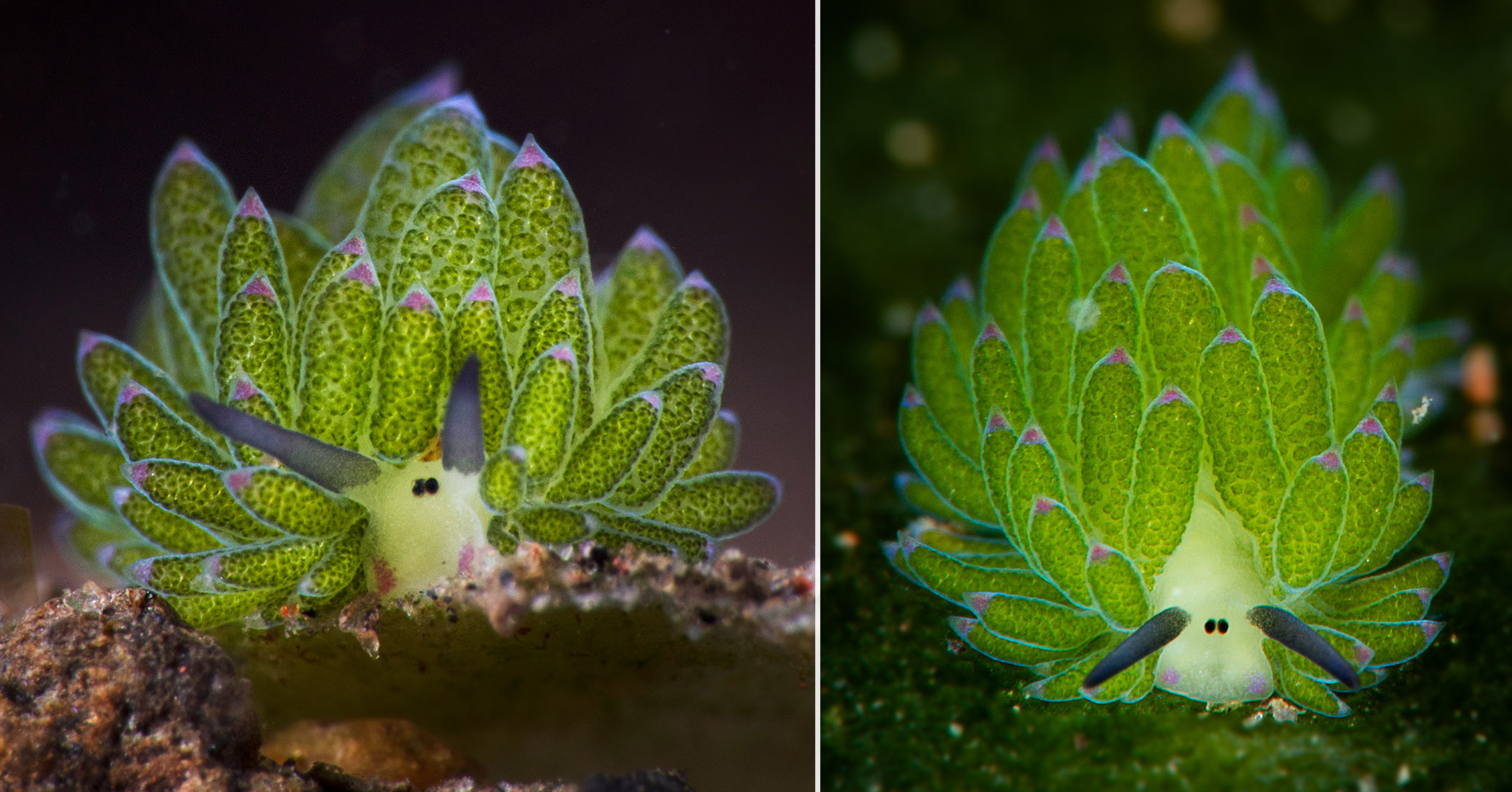
Most people aren’t fans of slugs until they encounter a “leaf sheep.” And this cartoonish sea slug is too cute to be real!
These amazingly tiny creatures—just 0.2 to 0.4 inches long—found along the coasts of Japan, Indonesia, and the Philippines, have faces that look remarkably like cartoon sheep. They’ve also earned the nickname “leaf sheep” or “leaf slugs”.
Peer at one of these glowing curiosities up close and you’ll see a pair of dark beady eyes and two rhinophores (antennae-like scent and taste receptors) that together look distinctly sheep-like. Combined with a coat of leaf-like plumage known as cerata, it’s no wonder admirers prefer “leaf sheep” to their rather less catchy official name, Costasiella kuroshimae.
There’s more to them than just their cute faces; leaf slugs possess the clever ability to feed themselves through photosynthesis. After chomping on algae—the leaf sheep’s equivalent to grass—they are able to retain chloroplasts, plant cell organelles that convert light energy into chemical energy.
This means that when sunlight hits the teeny slugs, energy is released into their cells to sustain them. The process of sucking the chloroplasts out of the algae is called kleptoplasty and it’s what makes them glow magically, like miniature marine glow-worms.
These fascinating creatures with their bioluminescent, speckled green cerata were first discovered in 1993 off the coast of the Japanese island of Kuroshima, according to the Global Biodiversity Information Facility. They are prevalent throughout the Indo-Pacific, where divers commonly refer to them as the “Shaun the Sheep” of the ocean.
Sharing a mesmerizing photo of one on Facebook, the scuba diving and travel blog My Mola wrote that the leaf sheep sea slug they spotted during their dive near the shore of Zamboanguita in the Philippines was “about the size of a grain of rice.”
Whatever category they fall into, there’s no denying the charming – and bizarre – appeal of the leaf sheep. They have earned a small cult following on Instagram, and fans also enjoy watching videos of the relatively newly discovered species on YouTube.
Owing to their Japanese origins, nature, and animal blogger Kristen Stanton says, many people liken these special “solar-powered sea slugs” to Pokémon. Meanwhile, other observers liken the cerata of the beautifully glowing little critters to the leaves of the succulent aloe-vera plant.
Share your stories with us at emg.inspired@epochtimes.com, and continue to get your daily dose of inspiration by signing up for the Inspired newsletter at TheEpochTimes.com/newsletter

